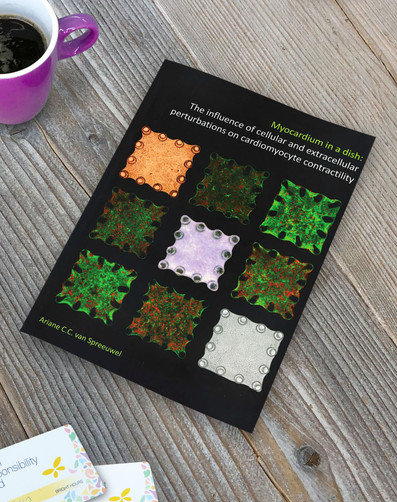
Cardiac tissue models have been developed to study cardiac physiology in vitro. With a high degree of experimental control, different tissue properties can be mimicked to unravel their contribution to the complex pathological conditions observed in vivo. A small perturbation in the cardiac microenvironment may trigger a cascade of adverse remodeling events, leading to the onset of cardiac disease. Nowadays treatments for cardiac disease mainly focus on relief of the symptoms rather than addressing the cause of the disease itself. To develop new treatments, more knowledge is needed about the effect that these small perturbations in cells or matrix have on cardiomyocyte function.
The aim of this thesis was to investigate the effect of changing microenvironments on cardiac contractility. A microtissue model was developed, consisting of both cardiomyocytes and cardiac fibroblasts, that allows for manipulation of cell number, cell ratio, and matrix organization and content, as well as quantification of tissue generated contractile forces.
Download Thesis